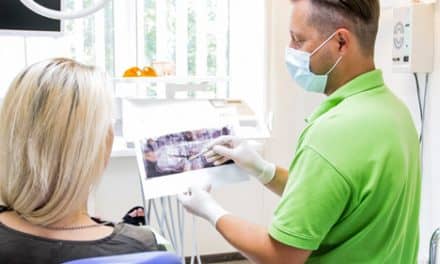Six orthodontic industry experts share practical, high-impact strategies to help established practices scale with intention.
By Orthodontic Products Staff
Growth looks different when your orthodontic practice is already established. You’ve built a reputation, a solid patient base, and a steady stream of referrals—but what comes next? For many orthodontists, the challenge isn’t launching—it’s scaling. That means finding ways to increase profitability, streamline operations, and enhance the patient experience without simply working more hours or adding more staff.
In today’s environment, where overhead continues to rise and patient expectations are shifting, growth requires a smarter, more intentional approach. It’s about making the most of the systems you already have, investing in the right tools, and developing a team that can support long-term sustainability.
To explore what smart growth really looks like, Orthodontic Products asked a group of leading consultants and marketing experts to share their most impactful strategies for helping practices move from stability to scalability. Their advice touches every corner of the business—from digital visibility and treatment coordination to supply management and staff training.
Each contribution offers practical steps orthodontists can take to unlock new efficiencies, increase case acceptance, and strengthen team performance—making it possible to grow the practice you have, not just the one you think you need to build.
Operational Efficiency & Patient Experience

Tip 1: Audit the invisible work.
Invisible work, like the time spent chasing down late-arriving patients, rewriting unclear doctor notes, or reworking no-show blocks, quietly erodes efficiency and profits. Conduct a “week in the life” shadowing audit for each team role to surface micro-frictions and process gaps. Then quantify the hidden costs (lost chair time, treatment delays, morale dips). This not only empowers staff with better workflows but also reveals where automation or role realignment could lead to immediate gains in capacity and profitability, without hiring or expanding hours.
Tip 2: Reverse-engineer your 5-star patient experience.
Instead of mapping the ideal patient journey from the clinic’s perspective, start with your best Google or internal reviews and work backward. What made those experiences unforgettable? Was it the handwritten note, the same-day start flexibility, or the team energy? Build repeatable systems that prioritize why people rave, not just what they do. This approach makes your brand stand out in saturated markets and gives team members clear, purpose-driven behaviors to scale with consistency.
Tip 3: Transform your TC with data-driven coaching.
The Treatment Coordinator is no longer just a presenter, they’re a Decision Coach helping patients move from hesitation to confidence. To empower your TC effectively, you need more than charisma, you need data. Build a KPI dashboard that tracks micro-metrics across the new patient journey: speed-to-answer, lead response time, consult-to-show rate, same-day start rate, and patient satisfaction. These real-time insights turn intuition into intentionality.
Pair these metrics with TC training that focuses on guiding, not selling, through curiosity and empathy. Equip them to recognize decision roadblocks (like financial fear or emotional overwhelm) and respond with tailored support. When TCs can see exactly where the conversion path breaks down and how their behavior shifts outcomes, their impact becomes measurable and scalable.
Share the dashboard weekly, celebrate small wins, and align your team around one goal: better conversations, better conversions.
Staff Development & Onboarding Retention

Ever feel like you’re constantly hiring… and re-hiring? You’re not alone. In orthodontics, turnover is a common (and expensive) headache, and more often than not, it traces back to one thing: onboarding.
Most new hires are eager to learn and contribute. But when they’re tossed into a busy practice with little structure, no clear training path, and a mix of “just watch and learn” moments, it’s overwhelming. That overwhelm builds over time, and many are already out the door within the six months. Here’s how to fix it:
Tip 1: Build a repeatable plan.
Use tools like Trainual to create clear SOPs, both written and video, that outline exactly what new hires need to learn during their first 30–60–90 days and beyond. Think of onboarding as a 1-year journey, not just a 90-day crash course.
Tip 2: Make it personal.
Assign a go-to person. A buddy or mentor who checks in regularly and makes space for questions and feedback. That relationship builds confidence and connection.
Tip 3: Talk culture early.
Day one should be about sharing your vibe, values, and what “awesome” looks like. Culture is how your team talks to each other, how you handle the busy days, and how you celebrate wins (and yes, even how you handle the “whoopsie” moments).
People don’t leave jobs. They leave chaos. Unclear expectations and confusing processes. A thoughtful, consistent onboarding process isn’t just a nice-to-have; it’s essential for retention, growth, and long-term team happiness. Investing in onboarding means investing in a smoother day-to-day, happier patients, and a team that’s ready to grow with you, without the constant headache of hiring (and firing) on repeat.
Digital Marketing & Online Presence

Tip 1: Use AI to help people find you online.
Today, people don’t just search on Google—they ask questions through voice assistants and AI tools like ChatGPT and Gemini. That’s where Answer Engine Optimization (AEO) and Geographic Optimization (GEO) come in. You want your practice to show up when someone asks, “Where can I get Invisalign near me?” or “What’s the best age to get braces?”
But it takes more than writing blog posts. Your content needs to be structured so AI tools and search engines can read and rank it. It also needs to include local keywords and cues so nearby patients can easily find you.
Instead of trying to figure this out on your own, hiring a qualified digital marketing vendor can save time and deliver better results. The right partner knows how to use AI tools, optimize for AEO and GEO, and make sure your content performs.
Tip 2: Add interactive features that build trust.
Simple features like a virtual smile assessment, live chat, or AI-powered FAQ can make your website more engaging and helpful. They also keep visitors on your site longer—boosting your SEO and building confidence with potential patients.
Tip 3: Turn happy patients into your best marketing tool.
Automate review requests after treatment and showcase great reviews on your site or in ads. Positive feedback builds trust and improves your local search rankings—making it easier for new patients to choose you.
Together, these strategies help attract ideal patients and grow your practice sustainably.
Referral Growth, Technology Adoption & Team Culture

Along with the general economy, orthodontics is going through many changes. There has never been a time when a focus on growth has been more necessary. Even for practices that are satisfied with where they are, there is a strong need to protect the future. Here are three key growth elements that have worked extremely well for Levin Group clients, that every orthodontic practice can put into place.
Tip 1: Design your referral marketing program with advanced and relevant strategies.
Building positive relationships with every parent, patient and referring doctor goes a long way to increasing referrals and growing your practice.
Tip 2: Focus on practice enhancements.
New technologies like remote monitoring can dramatically increase the amount of available chair time, allowing for significant increases in patient volume and production. The combination of efficiency-improving technologies and vibrant referral marketing will supercharge your growth.
Tip 3: If you want to have and grow a world class practice, you need to have a world class team.
Orthodontists must build a “culture of positivity” for the team creating an environment where they love coming to work and display enthusiasm, energy, and excitement to each other and every patient. Everyone on the team should be geared toward creating outstanding parent and patient experiences every day.
In a time when a growth mindset is essential for orthodontists, these simple strategies will help increase production today and position the practice for future growth and security. Could it be this simple to build a fantastic orthodontic practice? Yes. It is currently being done in practices all over the country. And you can do it as well.
Inventory Management & Overhead Reduction

Tip 1: Implement ordering cycles and systems.
It’s imperative to have a good supply list and stocking system in place. Restock chairs weekly from storage around the chairs. Resupply areas around chairs from storage. New product should always be placed at the back of the line in the main storage area. This way you are always stocked and rotating inventory. Reducing your ordering to once a month saves significant time and labor, and if you can order quarterly, you can eliminate 8 ordering cycles. A simple tag system or scanners from UpTracker that were introduced 2 years ago, can be used if you want to track things.
Tip 2: Pay attention to shipping fees.
If you are buying from companies with a minimum dollar purchase, group your orders so it is easier to hit the goal. Companies that offer free goods when you buy brackets charge for shipping, so it is important to place these orders monthly or quarterly, otherwise you can end up paying thousands in shipping by ordering free items weekly.
Tip 3: Know your supply cost percentage.
Many doctors do not know this figure and tend to focus on price comparisons while disregarding the bigger picture. By using a supply list with quality products at the best prices possible, you can profoundly reduce your overhead. If your supply cost is running too high, it’s time to look at the companies you are buying from and consider joining a buying group that doesn’t profit from your purchases.
Marketing Conversion & Reputation Management

While we recommend a holistic marketing approach to engage people actively seeking orthodontic care, we can parse our strategies down to three specific components:
Tip 1: Drive qualified traffic to your website.
Use targeted, local SEO and Google Ads to ensure your practice appears in relevant searches and Meta ads. This engages parents and adults in your community and drives them to your website to learn what sets your practice apart.
Tip 2: Your website should turn visitors into scheduled exams by clearly communicating your unique value.
Use strong, differentiated messaging alongside educational content, patient testimonials, and prominent calls to action that drive to HIPAA-compliant contact options like secure forms, SMS, and chat.
Tip 3: Build and leverage Google reviews.
Strengthen your practice’s credibility by implementing a system to collect patient feedback after their appointments, not just at braces-off. Start with an internal form to gain insights, then make it easy for them to share their experience on Google. A strong review presence builds trust, boosts visibility, and reinforces what sets your practice apart, helping to drive growth. OP
Opening Photo: ID 143401115 | Day © Lovelyday12 | Dreamstime.com










